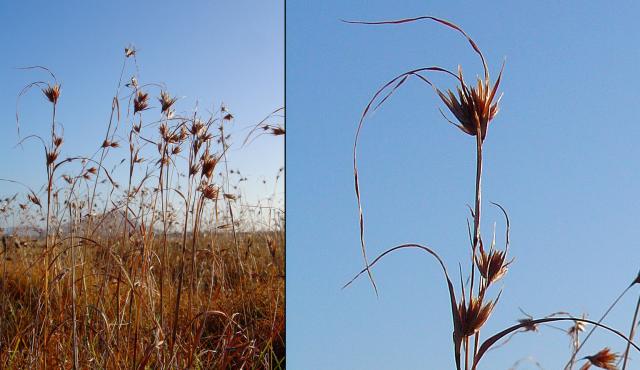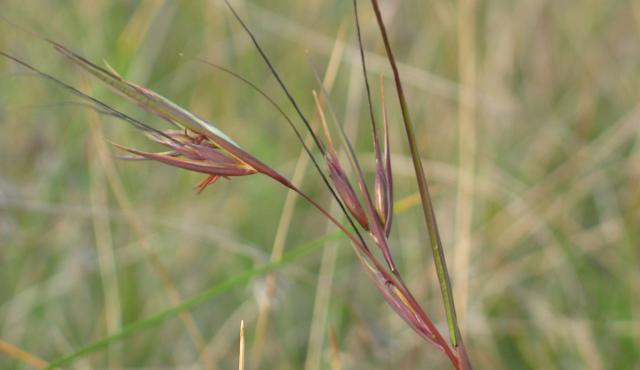


Kangaroo Grass
Themeda triandra
Grows as a tussock to 1.5 m tall and up to 1 m wide. Leaves are green to grey (sometimes quite blue), 10-50 cm long and 2-5 mm wide. Dries to an orange-brown colour in summer.
| Details | |
|---|---|
| Flora Type | Grasses |
| Former Scientific Name | Themeda australis |
| Distinctive Features | Large orange to red-brown flower and seedheads (spikelets). Orange-brown leaves in summer. |
| Biology | Perennial. Growth tends to be most vigorous in summer. This grass can become very dense (high biomass) and growth can block out other grasses and forbs. This grass is most healthy when it is occasionally reduced by burning, grazing or mowing, but it declines if overgrazed. Preferentially eaten by sheep. Seeds are eaten by birds and leaves are used as nesting material. |
| Native Status | Native |
| Flowering Time | Oct-Mar |
| Taxonomy | |
|---|---|
| Phylum | Tracheophyta (Vascular Plants) |
| Class | Magnoliopsida (Flowering Plants) |
| Order | Poales |
| Family | Poaceae |
| Genus | Themeda |
| Species | triandra |
One of the most widely distributed of Australian plant species ranging from Tas to NT, and from sea-level and the arid inland to the Alps. A favoured food plant for caterpillars of the Common Brown butterfly Heteronympha merope. Germinates in the first year after fire and short-lived in the seedbank. C4 grass (biochemical system that is part of photosynthesis) which favours the species in hotter environments.
| Interesting Facts | |
|---|---|
| Native Status | Native |